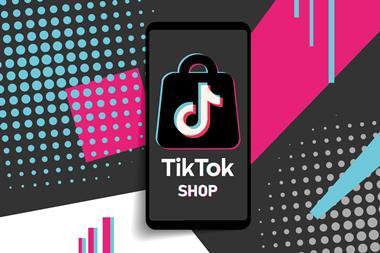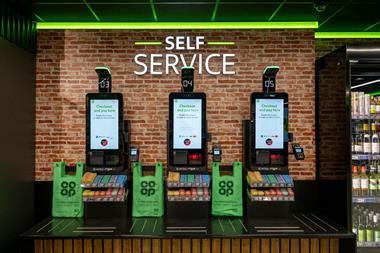Millions has been invested in CRM systems, but return on investment focuses on marketing. Joanna Perry reports
What began as a trickle of e-mail marketing offers from reputable retail brands has turned into a torrent in the past year. Once a consumer has purchased a few items online, signed up for a loyalty card, or entered their details for a retailer’s competition or other promotion, they will soon see their inbox fill up.
Some of these e-mails are carefully targeted, drawing on previous purchase information and other preference and lifestyle data provided by the customer. Others take the scattergun approach, figuring that the marginal cost of sending out less targeted messages is tiny, even if the response rate is similarly minute.
When speaking to retailers about customer insight and customer relationship management systems, marketing – and in particular e-mail marketing – is often the first area that tends to get discussed. And it’s not surprising, given that many are reporting e-mail marketing campaigns are not generating the same response rates that they once did, even with careful segmentation and targeting.
So, to get the most out of a CRM system and the data it holds, it is important to consider how the rest of a retail organisation can benefit from a better understanding of its customers. When devising a CRM strategy, the first thing to bear in mind is that expensive systems are not necessary for all retailers. Even technology and loyalty companies agree. EDS European director of consumer industries and retail Sion Roberts points out that anyone can canvas opinion. He says that, for many strategic decisions, getting people out on the street asking questions is quicker and cheaper than buying CRM technology.
“Successful retailers that don’t communicate with their customers can still respond to their needs,” says Dunnhumby director of consumer strategies and futures Martin Hayward. However, he adds: “The more interaction you have, the more you can make sure that what you offer is what they want.”
Loyalty Management Group chief executive Alex Moorhead does not believe in taking a half-hearted approach. He says that, once a retailer chooses to use data to target customers, rather than the proposition being purely about the lowest-price goods, it should invest to make the most of such a strategy.
BT Expedite consultant Tanya Bowen has been working with CRM systems within retail for 14 years. She says that, before a retailer contemplates investing in technology, it must consider who is likely to benefit. E-mail initiatives can provide a return on investment for the marketing department, but which other departments should also be considered in a return on investment model?
Bowen gives the example of using CRM to track the products purchased by loyal customers to help estimate future demand. Some retailers study the habits of their best customers to see what they buy early in the season, as this gives an indication of the merchandise that is likely to sell well.
She also believes that good use of CRM can prevent unnecessary discounting. “For one UK customer, we assessed the damage of offering a 10 per cent discount on their first store-card purchase,” she explains. “We found that 70 per cent of these first-time purchases were men’s suits. As a result, the retailer introduced a programme with a set of tokens to get discounts off future purchases instead.”
Marketing departments could also get more from CRM. Bowen says that working out which customers spend most money is not enough – instead, you should examine who contributes most to the bottom line of the business. She explains: “You need to understand what has been bought and what the margin is on each product, which can be pulled in from the merchandise management system. Show this on the record and also ensure you know how much it costs to send marketing information to each customer.”
There is also a case for sharing customer data and insight with suppliers. Managing director for Loyalty Management Group’s insight and communication division Peter Gleason says that the company intends to launch a web portal with toolsets that give retailers and fmcg companies access to data to help them make business decisions based on merchandising, promotions, marketing, store locations and pricing.
Made to measure
The business, which has been launched off the back of a deal with Sainsbury’s, will offer suppliers an insight into customers using data that is gathered by the Nectar scheme. However, LMG will also extend its methodologies and toolsets to other retailers that want to do something similar.
Gleason explains: “We will help retailers to bring customer measures into their weekly reports, such as how many unique customers they have had. For key areas such as ranging and assortment, we can look at which SKUs are valuable to loyal shoppers, or which products you could remove or customers will substitute. We can also see which items customers switch to when their normal choice isn’t available and then see if they go back to a product when it comes back on the shelves.”
He adds that retailers can benefit from their data even if they don’t do all the analysis through their own systems. “Most fmcg companies have more time and resources to go into detail. Sainsbury’s wants that to happen. It is very keen to expand the information that is available to fmcgs to help them make decisions,” he says.
Online retailers and a few high street names are lucky enough to be able to capture high levels of customer data by virtue of the way they trade. One of these, Dollond & Aitchison, is implementing a CRM system featuring technology from IT supplier SAP as part of a wider systems overhaul.
Dollond & Aitchison IT director Paul Willows explains that the company is data-rich. It has a different transaction process to other retailers, so it is easier for it to collect quality customer data. Even so, the new system will allow the company to store and manipulate the information in a smarter way than it has done in the past, exploiting techniques such as segmentation to understand what customers need and want.
He says: “There is much more to it than sending letters. Processes are important, especially in the way we deliver our service proposition. We will be able to do things like generate branch call lists for colleagues – for instance, to telephone customers to let them know their glasses will be in-store tomorrow.”
In the longer term, the system could allow major changes to quality of service. For instance, at the moment, eye tests can be booked via the web site, but staff must call customers to confirm details. Willows says: “With SAP, we want a step-change in capability, so you can book an appointment entirely online.”
In each Dollond & Aitchison store, there are computer displays that allow customers to view different frame designs for spectacles on a photograph of their face. Willows says that this could be extended to the web site to allow customers to look at pictures previously taken when they visited a store.
He says: “I won’t pretend that this will happen next week, but it is all possible. It is very much about harnessing the potential that we have. This is a very data-rich business. The way we have utilised that data until now has been acceptable, but not leading edge.”
Not many bricks-and-mortar retailers can gather customer data with the ease of Dollond & Aitchison. So, before deciding whether or not to invest in CRM, it is important to have a data collection strategy in place. Moorhead says that the loyalty card has proved itself as a means of collecting information and other technologies would have to do the same before they would be adopted as part of the Nectar programme. “For between seven and eight out of 10 transactions at Sainsbury’s, customers show a Nectar card. We care about collecting as much accurate data as possible,” he says. “We would only introduce biometrics or radio-frequency identification (RFID) once it has become mass market.”
Gleason explains that the distribution of new-style Nectar cards this month will allow the company to collect attitudinal data to complement the transactional data it has for individual customers. “The more information you have on people, the better. The new Nectar card is going out this week and is more rewards-oriented. It also gives us an opportunity to ask a very specific set of questions in a questionnaire and we will reward people with points if they complete it online.”
But, as the detail and analysis of data collected about consumers increases, is there a danger of a backlash if people feel that they are being watched too closely?
Hayward says that, so long as retailers are responsible and transparent about how data is collected and stored, this should not be an issue. “If the transaction is open and clear, the vast majority of consumers aren’t worried. People are pretty relaxed about the use of loyalty schemes,” he says.
Most discussions of CRM can use the analogy of the local corner shop – and this is no exception. The owner would use their knowledge of their customers when purchasing stock, making recommendations to them, and deciding who they would offer additional services to – such as credit or carrying bags to their door. Today’s retailers that need to compete on more than price alone can do just the same, but on a much grander scale.


























No comments yet